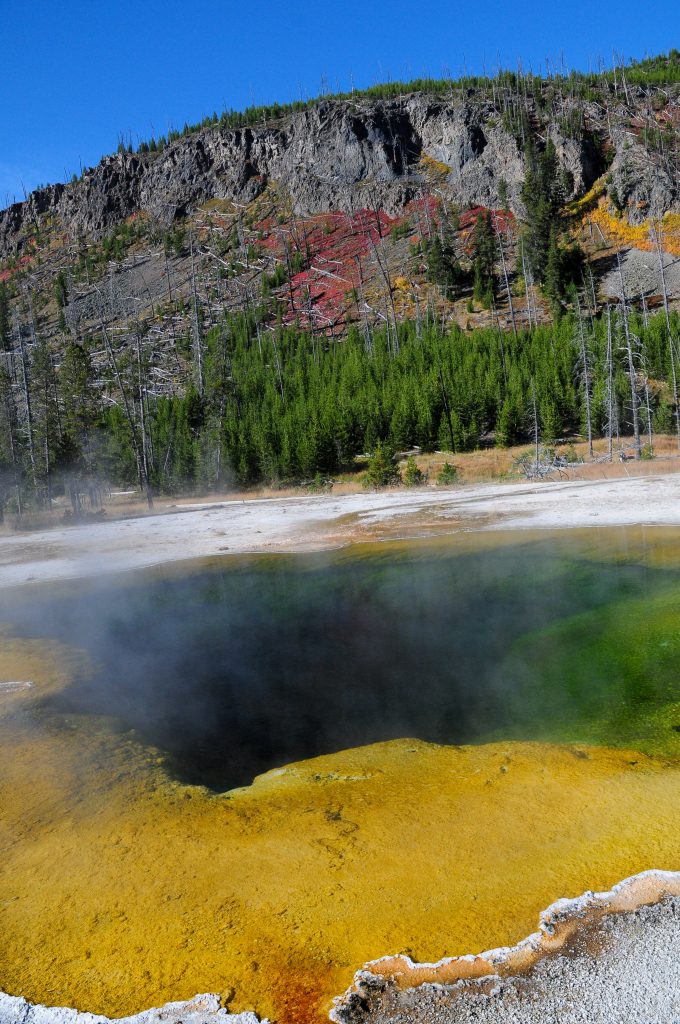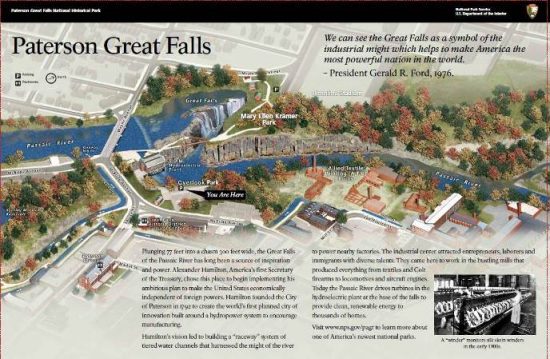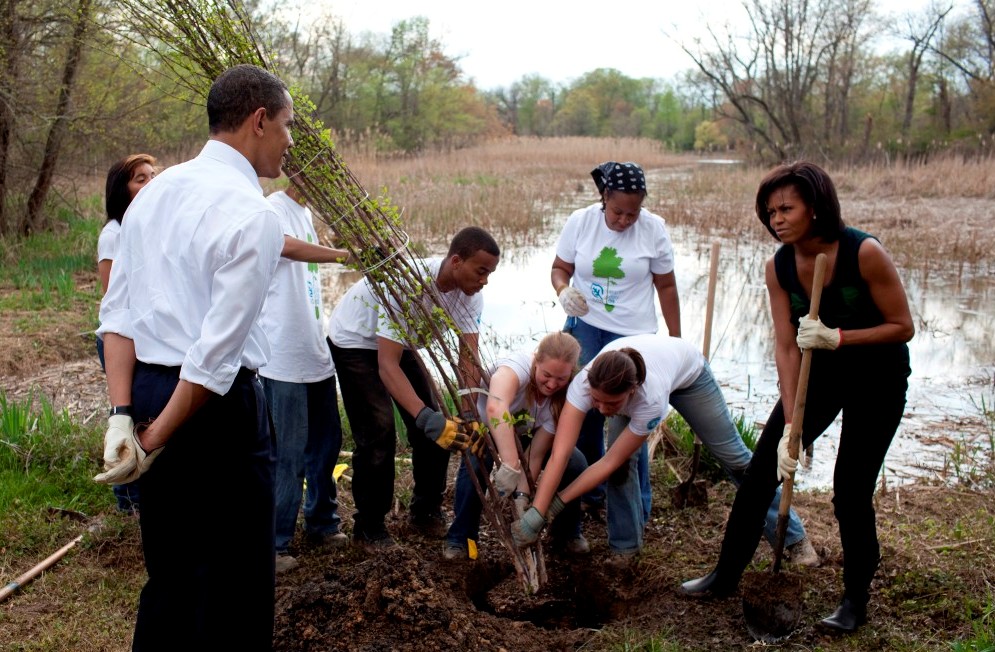August 25, 2016 marks the 100th birthday of the National Park Service.

For at least 11,000 years Native Americans have lived near the headwaters of “Mi tsi a-da-zi”, the Rock Yellow River. Not so long ago in 1872, the U.S. Congress and President Grant established the country’s first national park in this watershed. This grand ecosystem in Wyoming is our beloved Yellowstone– 3,468.4 square miles of lakes, canyons, rivers, mountains, and the largest supervolcano on the continent. Half of the world’s geothermal features are in Yellowstone, and is rightly held to be the first national park in the world, not just the United States’.
After 1872, 35 additional national parks and monuments had been established by several presidents. On August 25th, 1916, President Woodrow Wilson signed the Organic Act into law officially forming the National Park Service (NPS). NPS was established to manage and prevent neglect of these sites, and ensured the health of the now 84 million acres of land, monuments, reserves and historical sites under NPS protection. In 2016, NPS manages 411 national treasures in the form of parks, monuments, preserves, bodies of water, and other historical sites.
The majority of national parks are grand landscapes requiring time and resources to visit and explore. Wrangell-St. Elias National Park and Preserve in Alaska is larger than Switzerland and Mammoth Cave National Park in Kentucky holds the longest mapped cave system in the world. But many of these ‘sacred’ sites are smaller, accessible places within or near cities. These accessible places include 82 national monuments, 50 national historical parks, 78 national historic sites and a handful of national parkways and trails. In recent years, an embrace of urban National Park sites hints at the need and desire for accessible nearby nature.
A 2014 Next City article discusses a Chicago park hoping to become part of the National Park Service and explores other urban NPS sites as examples of the economic and social constraints to be considered with NPS expansion. Paterson Great Falls, listed below, celebrates an “early industrial city, but other NPS parks are essentially nature areas that run through urban centers, like Mississippi National River and Recreation Area, a 72-mile stretch located in and around Minneapolis and St. Paul. Still others are smaller historic venues, like William Howard Taft National Historic Site in Cincinnati…a notable few engage more deeply — sometimes more contentiously — with their urban setting. The Presidio of San Francisco, for instance, is administered under a model unique to national parks: Decisions about it are made by a trust (the NPS retains an advisory role), and the park is entirely financially self-sustaining, relying on revenues from leasing its many on-site properties. (The park was a former Army post.) The arrangement has led to fierce battles over what is and is not appropriate in a national park.”
Urban National Historical Parks and Sites such as these listed below in New Jersey, Washington D.C., and New Orleans exemplify the different urban populations and experiences possible in the NPS system:

Paterson Great Falls National Historical Park
This historical park in New Jersey was dedicated only five years ago and holds the current title of newest NPS park. A refreshing 77 feet high waterfall on the Passaic River has been an integral role in New Jersey development and engineering. Plans are underway to establish a new urban state park around the waterfall, turning industrial areas into parklands, a trail network, and new areas to view the falls. A visitor’s center is already established at the corner of Spruce and McBride Avenues, in the heart of Paterson.

New Orleans Jazz National Historical Park
This national historical park consists of 4 acres within Louis Armstrong Park, in the Treme neighborhood of New Orleans. A visitor center and concert venue provide additional settings for celebrating the cultural history of the people and places which helped to shape the development and progression of jazz.

Kenilworth Park and Aquatic Gardens
This NPS site contains the Kenilworth Marsh, the only remaining tidal marsh in Washington, D.C. Nestled in the midst of what is now urban sprawl, the 700 acre site is host to herons, shorebirds, beavers, muskrats, foxes, cattail, wild rice and algae. The abundant amphibians, insects, fish and reptiles are also reminders of the humid and lush ecosystem that defines the natural history of the D.C. area.
